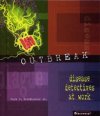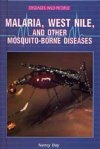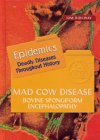Fighting Off Micro-Invader Epidemics Additional Information
Share this:
- Share via email (Opens in new window) Email
- Click to share on Facebook (Opens in new window) Facebook
- Click to share on X (Opens in new window) X
- Click to share on Pinterest (Opens in new window) Pinterest
- Click to share on Reddit (Opens in new window) Reddit
- Share to Google Classroom (Opens in new window) Google Classroom
- Click to print (Opens in new window) Print
You can learn more about the common cold at www.commoncold.org/undrstnd.htm (Commoncold.org) and kidshealth.org/kid/ill_injure/sick/colds.html (KidsHealth for Kids).
A poem by Ogden Nash about the common cold can be found at www.cs.rice.edu/~ssiyer/minstrels/poems/325.html (Rice University).
Learn about the West Nile virus at www.bam.gov/survival/westnile.htm (Centers for Disease Control and Prevention) and faculty.washington.edu/chudler/wn.html (Neuroscience for Kids).
For information about what viruses are, see www.cbc.ca/kids/general/the-lab/big-bang/00-02-04/default.html (Canadian Broadcasting Corporation).
Cold Facts about the Flu
pbskids.org/zoom/survey/flu_facts.html
PBS Kids
Books recommended by SearchIt!Science:
 |
Outbreak: Disease Detectives at Work— Mark P. Friedlander, Jr.
Published by Lerner Publishing, 2000.
You may not know what an epidemiologist is—but maybe one day, an epidemiologist will save your life. Epidemiologists are disease detectives. When a disease suddenly breaks out, epidemiologists figure out how it was spread, and what caused it. Doctors study disease in individuals, and epidemiologists study disease in populations. Full of stories and anecdotes, this book gives an introduction to epidemiology, and a closer look at microbes. It tells about the great plagues of history—black death and smallpox—and the infectious diseases still common today, like malaria, influenza, and diphtheria. The book discusses lethal diseases—AIDS, Legionnaire’s disease, the Ebola virus, and the Muerto Canyon virus; and how epidemiologists study these diseases. The last chapter focuses on the “ongoing battles” of disease investigation, including Lyme disease, Mad Cow disease, and antibiotic-resistant bacteria. |
 |
Malaria, West Nile, and Other Mosquito-Borne Diseases— Nancy Day
Published by Enslow Publishers, 2001.
In the summer of 1999, three patients at a New York City hospital shared unusual symptoms-they were feverish, confused, and too weak to move. Nearby, a specialist at the Bronx Zoo noticed crows dying at an alarming rate. Finally, scientists figured out what was going on: West Nile, a rare mosquito-borne virus had struck New York City. This book in the Diseases and People series discusses the West Nile virus, malaria, yellow fever, and dengue fever. Also, it mentions the anatomy and life of mosquitoes, and gives a comprehensive look at prevention methods, including the environmental problems with many prevention methods. A final chapter discusses the future of mosquito-borne illnesses, and mentions the effects of global warming on disease and the prospects of genetically engineered mosquitoes. |
 |
Mad Cow Disease: Bovine Spongiform Encephalopathy— Tom Ridgway
Published by Rosen Publishing Group, 2002.
Have you ever heard of bovine spongiform encephalopathy (BSE)? If you’ve heard of Mad Cow disease, then you know a little about it– Mad Cow disease is another name for this devastating disease, which kills cows by creating holes in their brains. In a clearly written text, this book explains about BSE and other transmissible spongiform encephalopathies. It discusses the mechanics of the disease and what happens when proteins go bad, as well as the history of the epidemic in Britain and the measures taken to guard against BSE in other places. If you’re concerned about the safety of eating meat, or just curious about mad cow disease, and you aren’t squeamish about learning about the practices of the meat industry that led to mad cow disease (i.e., feeding the meat and bones of cows to other cows), this book will prove to be a great resource. |
Power Words
bacterium Plural bacteria. Any of a large group of one-celled organisms that lack a cell nucleus, reproduce by fission or by forming spores, and in some cases cause disease. They are found in all living things and in all of the Earth’s environments, and usually live off other organisms. Bacteria make up most of the kingdom of prokaryotes. –Adjective bacterial.
DNA Short for deoxyribonucleic acid. The material that makes up the genes and that is found in all cells. DNA controls the function of all the cells in the body. DNA in the body consists of two thread-like strands that are linked together in the shape of a double helix.
immune system The system in humans and other animals that provides immunity by protecting against disease-causing agents, such as bacteria, viruses, parasites, and fungi. The immune system is composed of skin and mucous membranes, which provide an external barrier to infection, and the cells involved in the body’s immune response, such as lymphocytes.
microbe A microorganism, especially a bacterium that causes disease.
pathogen An agent that causes infection or disease, especially a microorganism, such as a bacterium or protozoan, or a virus.
virus Any of a large group of disease-causing agents consisting of a segment of RNA or DNA within a protein shell. All viruses are parasites because they can reproduce only inside the cells of plants, animals, and bacteria. Viruses are usually not considered living organisms.
Copyright © 2002, 2003 Houghton-Mifflin Company. All rights reserved. Used with permission.
